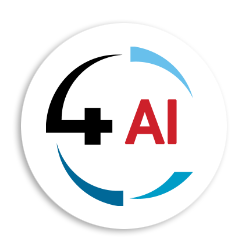Blog
Building Your Azure Practice A-Z: Part 2: Building Technical Capabilities

Completing your registration in the Microsoft Partner Center is like earning your driver's license. It grants you permission to operate, but it doesn't mean you're ready for a cross-country rally race. Building your technical capabilities is the process of moving from a licensed driver to a master mechanic and a professional racer, someone who doesn't just know how to drive but understands the engine, can navigate any terrain, and wins races.
This phase is arguably the most critical investment you will make. It's where you move beyond theory and into practice, building the skills that will directly translate into successful projects, glowing customer references, and a reputation for excellence. The goal is to shift from being a generic IT provider to being the obvious choice for Azure-centric challenges.
A Strategic Approach to Certifications
Certifications are the currency of credibility in the Microsoft ecosystem. They are not just badges for your website; they are a structured learning path that ensures your team possesses the validated knowledge required to design, implement, and manage solutions effectively. A haphazard approach to certifications will waste time and money.
The strategy should be to build a "certification pyramid" that supports your chosen specialization.
Start with the broad base of Fundamental knowledge. Every technical person in your organization, including pre-sales architects and project managers, should achieve the AZ-900: Azure Fundamentals certification. This ensures a common language and a baseline understanding of cloud concepts, services, and pricing. This is a non-negotiable first step that aligns everyone.
The next layer is the Associate level, which forms the core of your technical competency. For almost every specialization, the AZ-104: Microsoft Azure Administrator certification is the essential starting point. It provides the hands-on knowledge of implementing, managing, and monitoring an Azure environment. From here, your team should branch into role-based certifications that align with your services. A solutions architect pursuing the AZ-305: Designing Microsoft Azure Infrastructure Solutions is paramount for designing workloads. A security-focused engineer would target the AZ-500: Microsoft Azure Security Technologies certification.
At the apex are the Expert and Specialty certifications, such as the DevOps Engineer Expert (AZ-400) or Azure for SAP or other custom Workloads Specialty. These are for your lead architects and deep-domain experts. They signal to the market that you possess elite, niche skills capable of handling the most complex enterprise transformations.
The actionable step here is to create a certification roadmap. Map out which certifications are required for your target Microsoft Solution Partner designation. Assign them to individuals on your team with clear timelines. Budget for the exam costs and, crucially, allocate paid time for study and practice. This investment is as important as any software tool you will buy.
The Critical Role of Hands-On Practice
Passing an exam proves you know the theory; hands-on practice proves you can apply it. The gap between these two can be vast, and it is in this gap that projects fail. Microsoft provides the tools to bridge this gap and leveraging them is a mandatory step.
Upon becoming a partner, you gain access to the Partner Central portal, which is a treasure trove of enablement resources. Most importantly, you can request Azure Partner Credits. These are monthly subscriptions of free Azure credits (often thousands of dollars) deposited into a dedicated Microsoft Internal Tenant (MIT). This is your sandbox, your playground, and your laboratory. It is not to be used for production workloads but for fearless experimentation.
The actionable step is to mandate usage. Every technical employee should have access to this sandbox. Create a weekly “innovation hour” where the team must build something new. Systematically work through the Microsoft Learn modules that include hands-on labs. Recreate common customer scenarios: build a hybrid network connection using a VPN Gateway, migrate a virtual machine using Azure Migrate, configure a web application with Azure App Service and a database, and then secure it all with Microsoft Defender for Cloud. Break things on purpose and then learn how to fix them. This iterative process of building and troubleshooting is where true, resilient expertise is forged.
Leveraging Microsoft’s Technical Resources for Real-World Readiness
Your practice shouldn’t be built in a vacuum. Microsoft provides frameworks and tools designed to de-risk customer engagements and provide a structured delivery methodology.
One of the most valuable resources is the Cloud Adoption Framework (CAF). The CAF is a comprehensive guide for navigating the entire cloud journey, from strategy and plan to readiness and adoption. Your architects and consultants must become intimately familiar with the CAF. Using its methodologies—such as defining a landing zone for governance and security—ensures your proposals and implementations are aligned with Microsoft’s own best practices. This dramatically increases the likelihood of a successful, secure, and well-governed outcome for your client.
Furthermore, you should practice using the Azure Well-Architected Framework to review workloads. This framework built around five pillars—Cost Optimization, Operational Excellence, Performance Efficiency, Reliability, and Security—provides a consistent approach for evaluating architectures and implementing improvements. Before offering a cost optimization review to a customer, perform one on your own sandbox environment. This turns a sales pitch into a demonstrable skill.
Finally, explore the technical assessments available through the Partner Center, such as the Azure Migration Assessment or the Microsoft Defender for Cloud Assessment. These tools can automatically generate data-driven reports on a customer’s environment, identifying opportunities and providing justification for your proposed projects. Learning to run and interpret these assessments is a powerful presales tool that adds immense value to initial client conversations.
Building the Engine for Growth
Phase 2 is not glamorous, but it is the engine of your future Azure practice. It requires discipline, investment, and a commitment to continuous learning. By strategically pursuing certifications, aggressively using your sandbox environment for hands-on labs, and embedding Microsoft's operational frameworks like the CAF into your DNA, you are doing more than just building skills—you are building a culture of technical excellence.
This culture will become your most significant differentiator. When you sit across from a prospective client, you won't just be able to talk about Azure; you will be able to articulate how you will use it to solve their specific problems, guided by proven methodologies and backed by validated expertise. This confidence is what closes deals.
With your technical capabilities firmly established, my next Blog, "Developing Your Azure Offerings," will focus on packaging this expertise into marketable, profitable services that customers will want to buy.
If you require more assistance with this process, please contact your Surestep Ambassador team at This email address is being protected from spambots. You need JavaScript enabled to view it. to assist you with possible guidance building a successful Azure Practice.


